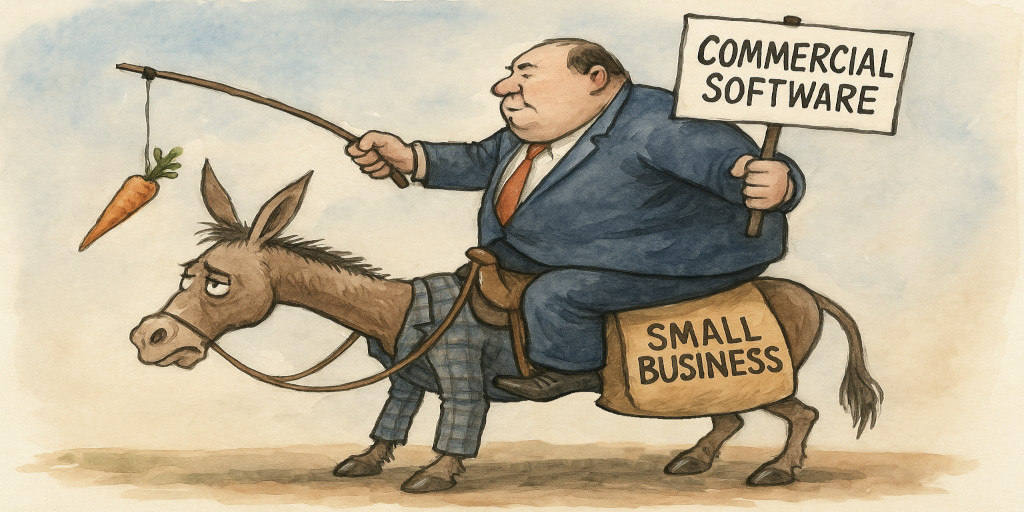Commercial Pain Points: Monetization Over Customer
| Published: | Monday, September 8, 2025 |
| Author: | Daniel Patterson |
How the customer is forced to take a back seat to monetization
The Profit-First Model
In today's software marketplace, one of the clearest patterns to emerge is that of profit-first design. Large commercial vendors have increasingly locked essential features, and the very functionality that businesses depend on, behind prohibitively expensive subscription tiers or add-on packages. This practice creates an economic barrier so steep that even organizations with the cash flow to afford it would struggle in an attempt to rationalize the investment.
Unlike tangible assets, software has no inherent resale or recovery value. Once you have paid for it, the money is gone forever. The only justification for a software transaction lies in the software's ability to generate real, measurable productivity, making your work easier, faster, and more successful. Yet, for many businesses, especially smaller ones, that return on investment never materializes.
Even at the highest levels of buy-in, what is offered feels hollow, as if companies are selling the illusion of productivity. To borrow an agrarian metaphor, buying enterprise software can feel like scattering grain into the wind with the hope of a harvest. The companies able to afford these staggering fees often seem to do so less for genuine productivity and more for brand recognition, signaling success rather than achieving it. Smaller organizations, meanwhile, remain on the outside, possibly clinging to the irrational belief that one day their budgets will allow them into the same fold, and that doing so could guarantee their success.
But this is a false promise. Commercial software producers are not in the business of empowering their customers; they are in the business of maximizing profit. If they must gesture toward providing value, they will, but always as a means to secure their own revenue streams. The result is a model that undermines not only small businesses everywhere, but also the health of the wider economy and, ultimately, the progress of society itself.
The Contrast With Open-Source
Alternatively, the open-source ecosystem demonstrates a radically different economic strategy, because it places the user at the center, instead of monetization. While there are always exceptions where the tag line of open-source is co-opted as a marketing term for thinly veiled commercial strategies, the vast majority of open-source producers are motivated by a conviction that software exists to serve people.
In the open-source model, scarcity is never manufactured. The software itself, in its most capable form, is almost always free to download, explore, and use. The value exchange happens later, and only if the user chooses it. Businesses that need help, whether with customization, configuration, or ongoing maintenance, can hire contributors or community experts on a per-project or per-hour basis. These experts can even be found within the same local region, which helps to build stronger community ties in the process.
This model creates a healthy balance of independence and support. Once the project is complete and the invoice is paid, the relationship is finished unless the user literally wants more services. There are no endless tiers, no forced subscriptions, and no artificial limitations that lock away the core functionality. Instead, the software remains in the user's hands, fully functional, and open to whatever adaptations their unique circumstances require.
In addition, open-source fosters a culture of reciprocity. Businesses that thrive on the back of open-source solutions often choose to contribute back, whether financially, through code or documentation, or by offering general expertise, to ensure the ecosystem continues to grow. This cycle creates a virtuous loop where the software evolves because it genuinely serves its users, and its users, in turn, support its continued evolution.
 werMake
werMake